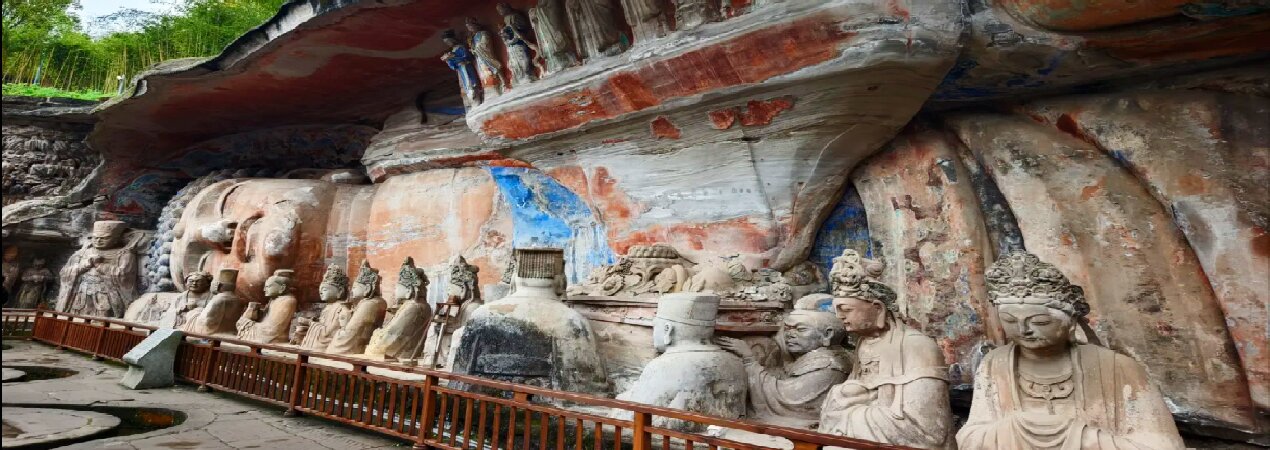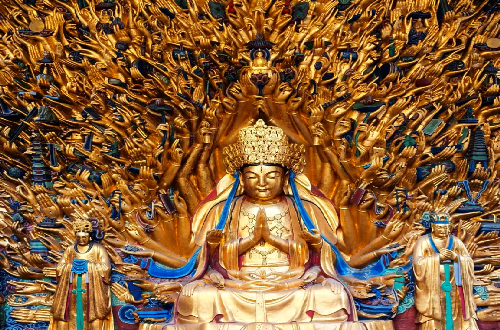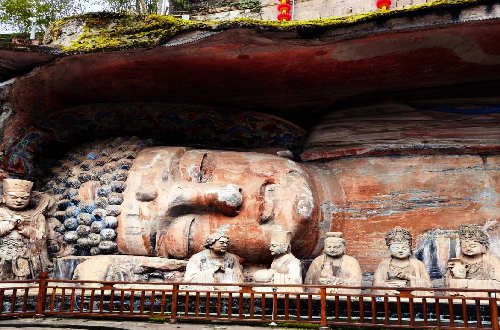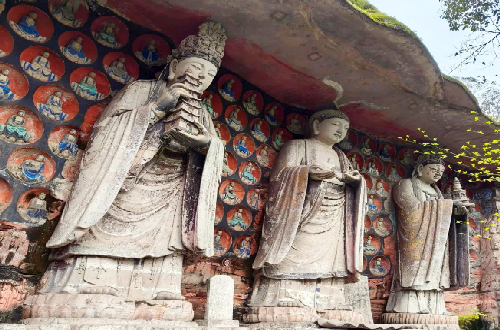Dazu Rock Carvings

Dazu Rock Carvings are a general term for the grotto art in Dazu District, Chongqing, which is mainly manifested as cliff carvings. They are represented by the "Five Mountains" grottoes, including Baoding Mountain, Beishan Mountain, Nanshan Mountain, Shimen Mountain, and Shizhuan Mountain. They are representative works of China's late grotto art.
It was first built in 650 AD (the first year of Yonghui in the Tang Dynasty), rose to prominence during the Song Dynasty (both the Northern and Southern Song) and endured through the Ming and Qing Dynasties, spanning more than a thousand years. There are more than 50,000 statues and more than 100,000 characters of inscriptions. Dazu Rock Carvings are renowned worldwide for their large scale, exquisite carvings, diverse themes, rich connotations and well-preserved state.
- Chinese name: 大足石刻 dà zú shí kè
- Suggested time: At least half a day.
- Ticket: There are varied ticket prices across different scenic areas in different seasons, with the price range spanning from 30 yuan to 140 yuan.
- Open hours: Baodingshan and Beishan Rock Carvings: 9:00 - 18:00. Nanshan, Shimenshan, and Shizhuanshan Rock Carvings Scenic Areas: 9:00 - 17:30.
- The best time to visit: Spring and autumn are the best seasons
- Address: Dazu Rock Carvings Scenic Area, Baoding Town, Dazu District, Chongqing (Address for Baodingshan Rock Carvings)
- How to get there: By car
Highlights of Dazu Rock Carvings
Thousand-Handed Avalokiteshvara
 Thousand-Handed Avalokiteshvara
Thousand-Handed AvalokiteshvaraThe Thousand-Handed Avalokiteshvara is carved on a cliff face covering an area of 88 square meters. Thousands of arms spread out like a peacock spreading its tail, shining with golden light. It is the largest cliffside stone carving in China that integrates carving, colored painting, and gold leaf application. This genuine Thousand-Handed Avalokiteshvara, created by ancient Chinese artists, has 830 hands and eyes, and is renowned as a "wonder of the world". Here, you can ponder and learn about the use of ancient Chinese carving tools, the carving process, and the application of mechanical principles in carving.
The Holy Relic Diagram of Sakyamuni's Nirvana
 The Holy Relic Diagram of Sakyamuni's Nirvana
The Holy Relic Diagram of Sakyamuni's NirvanaThe Holy Relic Diagram of Sakyamuni's Nirvana, also known as the "Reclining Buddha", 31 meters long and one of the most spectacular statues in the stone carvings of Baodingshan. It depicts the scene when the Buddha Sakyamuni entered Nirvana. The Buddha's body lies on its side, with a serene expression. Surrounding it are numerous disciples, bodhisattvas and other figures, each with a different expression. Some are weeping bitterly, while some are deep in meditation. It vividly shows the scene of the Buddha's Nirvana and the different reactions of the disciples.
The Three Holy Ones of Huayan
 The Three Holy Ones of Huayan
The Three Holy Ones of HuayanYou can see that the Three Holy Ones of Huayan are leaning forward slightly, looking down, giving people a sense of solemnity and intimacy. In the middle is Vairocana Buddha, on the left is Samantabhadra Bodhisattva, and on the right is Manjusri Bodhisattva. The three statues are seven meters high. The pagoda held by Manjusri Bodhisattva weighs nearly 500 kilograms and has not fallen for more than 800 years. This is because the cassock is cleverly used to support the arm, showing the application of mechanical principles in sculpture.
The Diagram of the Six Realms of Reincarnation
It is one of the important works of the stone carvings at Baodingshan in Dazu. The diagram features a huge carved roulette. In the center of the roulette, a practitioner is seated. The areas around the roulette respectively represent the Six Realms (Heaven, Human Realm, Asura Realm, Animal Realm, Hungry Ghost Realm, and Hell Realm), showing the reincarnation scenes of all living beings in the Six Realms. It reflects the Buddhist ideas of karma and reincarnation. The composition of the entire statue is rigorous, the figures are vivid, and it has strong artistic expressiveness and religious appeal.
Drop us a line and we'll connect you with the top China expert in no time!